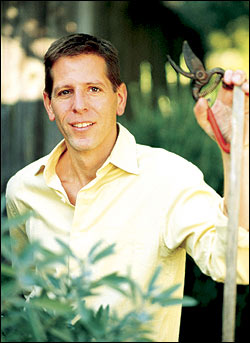The season’s cookbooks most touted nationally seem to fall into two great divisions. On the one hand are chatty guides promising great family meals in 15 to 45 minutes, with or without the use of Campbell’s Condensed Golden Mushroom Soup, pre-shredded Tillamook cheddar, and/or Tater Tots™. On the other are gargantuan collections purporting to contain every recipe you’ll ever use in a lifetime in the kitchen. The 850 spiral-bound pages of the America’s Test Kitchen Cookbook is the heavyweight this season, but Mark Bittman (remember when he was “the minimalist”?) gives the Cambridge gang a run for its money with his 4-pound compendium of 1,000 recipes from round the world.
Meanwhile, here in the Northwest, a number of notable cooks are hitting the bookshelves, some for the first time, with refreshingly divergent approaches. Nobody here is trying to rule the world; each offers a wholly personal guide, one person’s method of putting food on the table.
The most mainstream of the new publications is probably Entertaining in the Northwest Style (Sasquatch Books, $29.95), by chef, food consultant, and Seattle Times columnist Greg Atkinson. Atkinson has produced two straightforward cooking collections in the past; the new book is organized differently. Atkinson suggest a baker’s dozen menus, tailored to seasonal situations, with titles like “A Feast for Spring,” “High Tea in an Island Garden,” and “A Homemade Luau.” Some people find this form of organization inspiring when planning their own special events; others, more confident of their ability to put together meals for any occasion or company, may want to pass—though Atkinson tries to accommodate such users by listing all dishes suitable for a particular course together in the index.
“Everybody knows” that Rover’s in Madison Valley is one of Seattle’s, and the nation’s, best restaurants. Unfortunately, Thierry Rautureau’s lovely, intimate house-restaurant has an undeserved reputation as being too expensive for any but the very well-to-do. Rautureau’s new book (Rover’s, Recipes From Seattle’s Chef in the Hat, Ten Speed Press, $40) isn’t going to change that rep, though co-author Cynthia Nims has done a great job encouraging her collaborator to make the essential distinction between Rautureau’s exacting but basically straightforward cooking and the exquisite attention paid to presentation at the restaurant.
You can, for instance, dry empty eggshells and peel their interior membrane before filling them with scrambled eggs, lime-scented crème fraîche, and caviar. But you can also toss the shells and put the dish on a plate and serve it for breakfast, where it will elicit the same moans of pleasure it does as the restaurant’s most famous first course. So you don’t have a friend in Scotland to send you wood pigeons every autumn; what’s wrong with plain old American squab?
Mauro Golmarvi has a clientele devoted to his classic but down-to-earth Italian cuisine, and the Assaggio Ristorante Cookbook (Documentary Media, $24.95) is essentially a beautifully illustrated print reminiscence of the restaurant’s greatest hits, heavily seasoned with Mauro’s sometimes salty and always passionate thoughts about food, wine, and the good life. I’m delighted that he’s published it, but I suspect I’m not going to use it as directed; why should I whip up Risotto Sienese at home when I can make a phone call and half an hour later have Mauro whip it up for me?
I suspect that The Cafe Flora Cookbook (HPBooks, $25.95), on the other hand, is going to be very popular with practical cooks. Every cook probably knows one or two totally vegetarian dishes that don’t leave one longing for a bit of animal protein as dessert. But if you’ve dined at Catherine Geier’s Madison Valley establishment, you know that she can make an all-vegetable menu totally satisfying from appetizer to dessert. Unfortunately, this is harder to achieve than Geier makes it look, as you’ll find when you open her new cookbook. A lot of dishes call for ingredients that themselves require prior prepping and/or cooking. But if you’re willing to take things step-by-step, you’ll soon be assembling dishes that even a junk-food eater might find appetizing, with no hint of the wet-wool-and-granola feeling that emanates from older, more doctrinaire veggie cookbooks.
I’ve saved Jerry Traunfeld’s The Herbal Kitchen (Morrow Cookbooks, $34.95) for last because it’s both a collection of superb recipes and, wonder of wonders, a brilliant example of the great-dinners-in-half-an-hour school of food writing. Except when you make a Traunfeld recipe in half an hour, you’ll be glad you did—hell, you’ll be ecstatic. Where Traunfeld gets his ideas I don’t know, but they are often startling, even counterintuitive, yet invariably brilliant. Take Essence of Corn Soup. Ingredients: sweet corn, butter, and salt. Oh, and a garnish of basil. It takes about 45 minutes to make. Yet I promise you that no better soup has ever graced your table. Then there’s Shiso Crab Cocktail: red onion and chopped shiso leaf marinate in rice vinegar. Toss with olive oil, crab meat, and avocado chunks and you’re through for the day. And you’ll faint with pleasure when you eat the results.
Even when a recipe takes longer, it’s no harder to pull off. The batter for Traunfeld’s Warm Lavender Almond Cakes has to be made a day (or a week) ahead. When you’re sitting down to dinner, pop the batter into a muffin tin, and by the time you’re ready for dessert, dessert is ready for you, right out of the pan and perfuming the house with buttery, almondy goodness.
As if the recipes weren’t enough for your money, there’s also page after page of wise, sensible, easy-to-follow tips about growing and using fresh herbs every day. Dinner at the Herbfarm Restaurant in Woodinville, where Traunfeld runs the kitchen, is rightly considered an extraordinary culinary experience. With this book, you can have the extraordinary at your beck and call, every day of the week.








